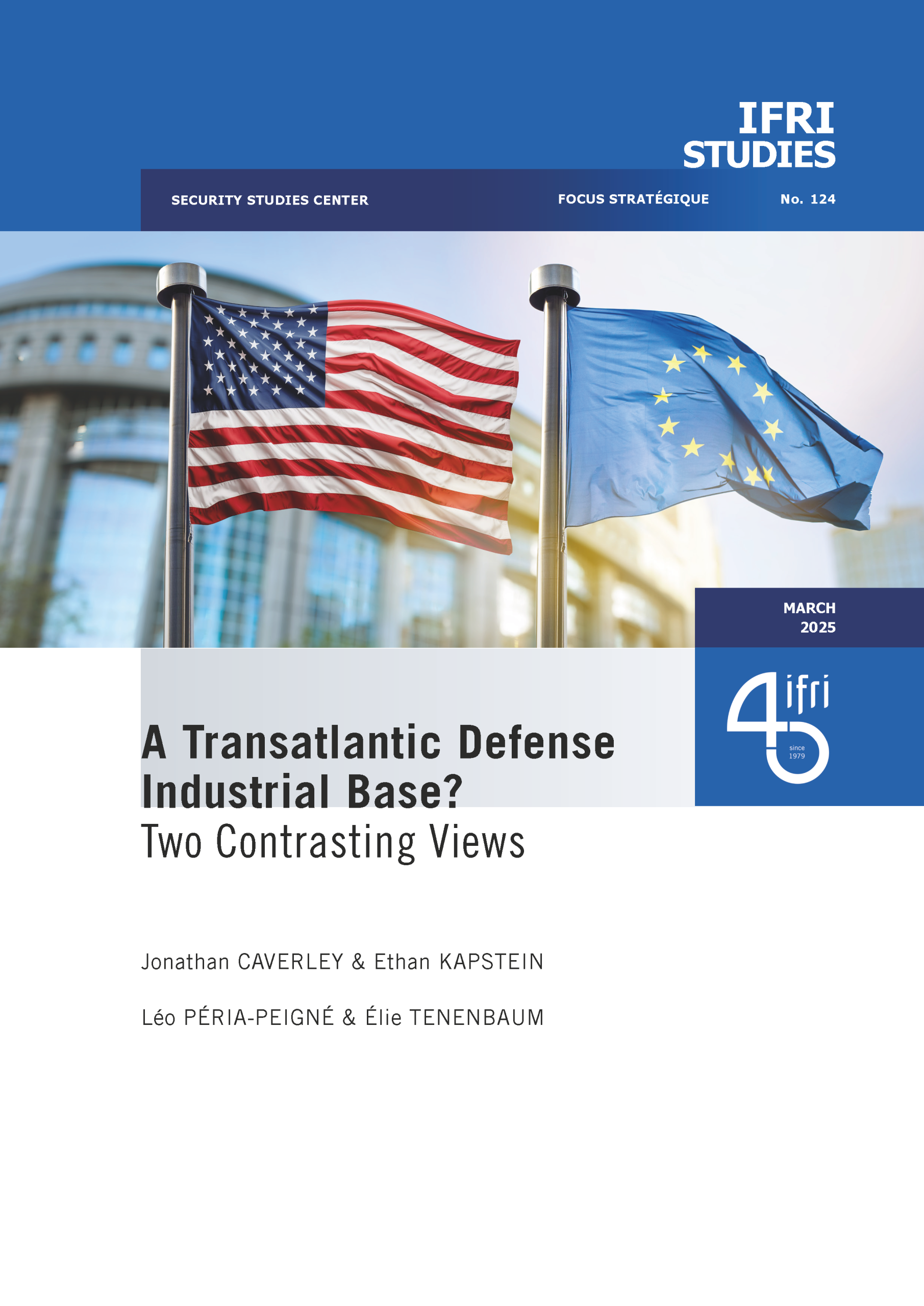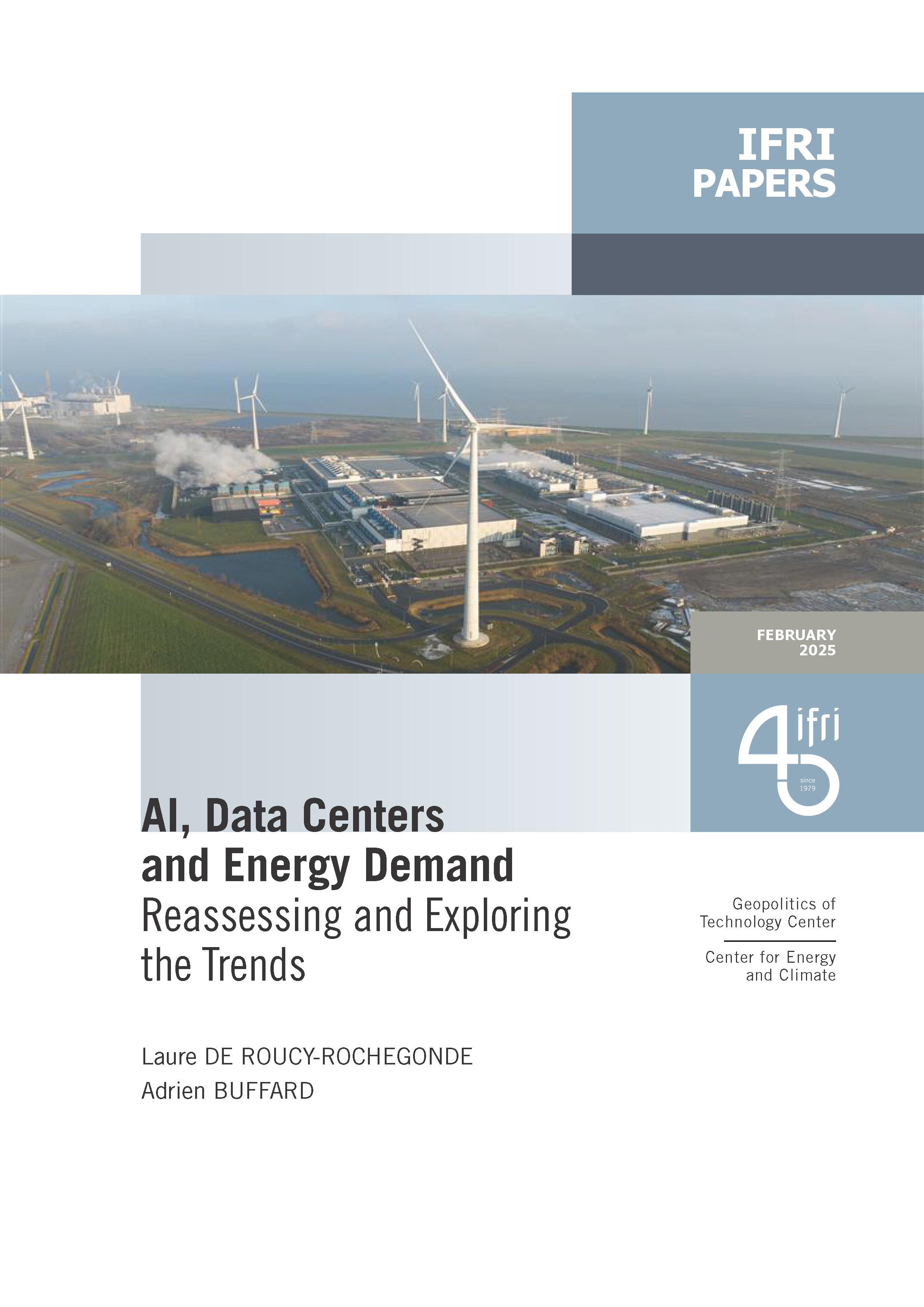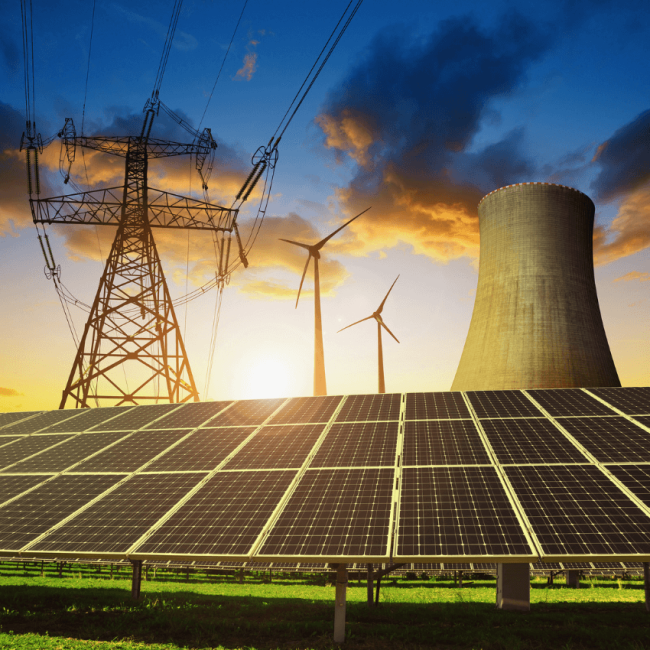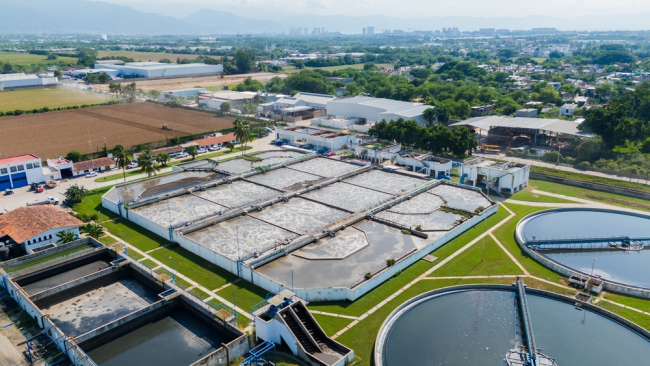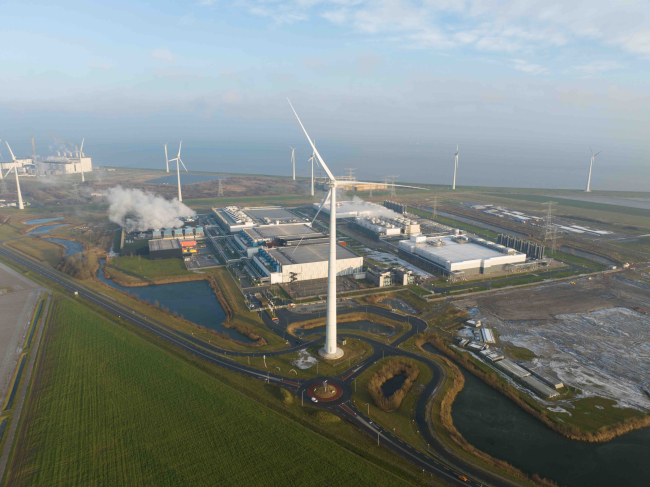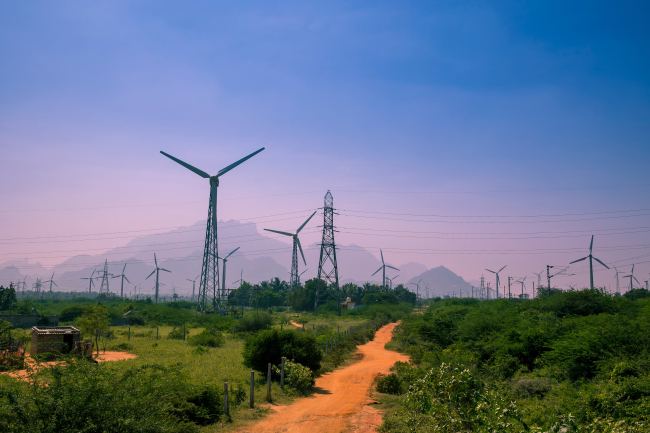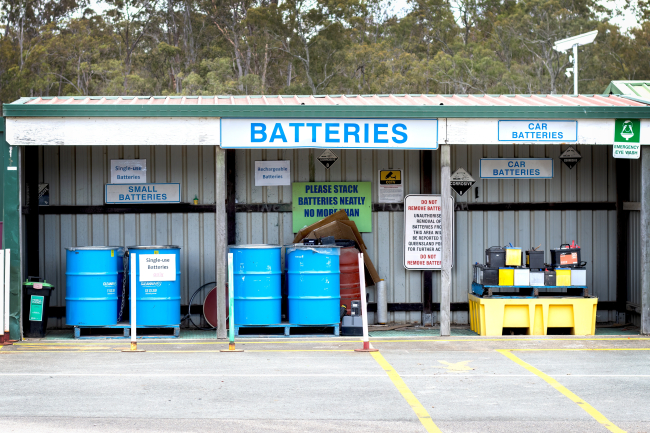Double Whamming for Energy Financing: Energy Prices and Credit Availability

Report written by Christian Schülke, Junior Research Fellow at Ifri"s Energy program
Within the Ifri Energy Breakfast Roundtable, a seminar with Jan Stuart, Global Oil Economist, UBS Securities LLC, Didier Houssin, Director of Energy Markets and Security, IEA, and Jan H. Keppler, Professor of Economics, Paris-Dauphine, Senior Reseach Associate, Ifri Energy Program
William C. Ramsay introduced the roundtable by giving an overview of the consequences of the sharp decrease of the oil price and the credit crunch for the financing of energy projects. Some analysts say that underinvestment will be the main result and they hence predict a major supply crunch in some year"s time. Others are more optimistic and point to the compensation and mitigating effects of the current situation, e.g. demand destruction and substitution. So a major question for the future is the extent of demand destruction that has happened: will this demand come back once the economic crisis is over? Furthermore, as developing costs decrease, will lower cost pressure allow some important projects to go forward? Finally, will the low oil revenue have an influence on producer countries stance on foreign investment by International Oil Companies?
I. Presentations
Jan Stuart underlined that the oil price is currently going down for some fundamental reasons. Due to the global economic and financial meltdown, the fundamentals determining demand and supply have indeed changed. As a consequence, some US demand for oil has been effectively destroyed, to a much stronger extent than expected. What is more, Saudi Arabia, the world"s most important oil producer, has changed its mind and is not doing everything it could to keep oil prices high. Saudi Arabia is aware of the financial meltdown taking place, but accepts the market mechanism which pulls the oil price down. Saudi Arabia indeed told its OPEC partners that they could not afford to turn the oil market round by excessively cutting production. The fact that the cost of producing oil has risen lately also contributes to the current uncertainties, as well as the accelerating decline of many established oil fields (Mexico"s Cantarell field being a very good example for this).
As UBS currently predicts an average oil price of $60 for 2009 (and $75 for 2010 - the medium term outlook remains structurally bullish), the key question for the oil market is now: What will be the consequences for the oil companies and their investment plans? Evidence from the past shows that oil production does not necessarily follow the price changes, or at best only to a certain extent. It is technically difficult to radically cut production. Some above-ground reasons also come into play. Due to many reasons, low-cost production is expected to fall most. Investments will be delayed with many companies reviewing their investment plans within weeks (and not within months, as they did in the past when the global economic outlook worsened).
Commenting some of his graphics (see the power point presentation), Jan Stuart stressed that nobody really knows how far oil demand will go down in 2009. This makes exact forecasts about the oil price and future levels of investment very difficult. However, one might think that the oil price will likely cycle off a floor and into a rising ceiling soon. To know where the price will be going exactly, we need answers on the macroeconomic situation (i.e. when will the credit crunch ease?). If the price was to stay at today"s low level for a longer time, supply will go down to even lower levels than today. The damage low prices do to capacity is indeed a key question at the moment.
Jan Horst Keppler mainly focused on the consequences of the financial crisis on energy investments. He reminded the audience that there is a complex interdependence between the financial market and the energy market and that we have seen a strong interlinkage between the two in the last years. This was in a large part due to excess liquidity, financial market deregulation and new financial engineering, which led to a rapid energy demand growth and an unprecedented price surge. It is however highly questionable if an oil price of $147 per barrel really reflects the marginal cost of oil production. It is important in this context to distinguish between short-term and long-term marginal costs; the fluctuations of the oil market make it however difficult to analyse the level of the marginal cost.
There has been a lot of talk about financial speculation contributing to high oil prices. One has to acknowledge that speculation indeed contributed to the extraordinary rise of the oil price, but the speculation did not happen in secrecy. There was no market manipulation; the price bubble rather was a consequence of exaggerated expectations about future growth and price levels that were delinked from industrial realities.
The financial crisis certainly affects the financing conditions of energy projects, as de-leveraging and the sudden turnabout in risk perceptions lead to harsher credit conditions and to a limited effectiveness of monetary policy. But the energy sector is generally less concerned than other sectors thanks to its large size, the generally professional management, stable cash flows (energy remains a basic necessity with income elasticity below one: energy demand is less volatile than prices may suggest) and long timeframes (which means that short-lived slump is less important).
According to Jan Keppler, the risks for energy investment rather come from two different areas, namely “self-defeating expectations” (D. Babusiaux) and the lack of governance in energy investments. First, the long delays between project decision and operation, as well as uncertainty about future prices, lead to a hog-cycle phenomenon. This means that current prices determine investment decisions today, but the effects on the production level will be felt only five or so years later. The memories of overcapacity in the 1990s linger and the current recession re-enforces the short-term focus. Second, the lack of governance in energy investments is mainly due to resource nationalism and unpredictability concerning the protection of investments. Mr. Keppler however estimated that producer countries will be more willing to respect the established rules on foreign investment in the aftermath of the current crisis, as they will be more dependent on foreign investment than before. What is more, the NIMBY phenomenon and the lack of priorities in energy policies hinder investments in consumer countries. Finally, the increased uncertainty about transport security (especially maritime transport) also negatively affects investment decisions.
Finally, the energy market also impacts on the finance market: the lack of sufficient investment and increasing marginal costs contributed to high energy prices and an increasing surplus for low-cost producers. This led to transfers from consumers to producers that probably amount to a sum between $1 and 2 trillion per year. This number should be compared to the world economy amounting to $60 trillion and global trade flows worth $20 trillion in 2008. The key question for the world economy resulting from these transfers is the following: How efficiently do exporters of natural resources and manufactured goods recycle their commercial surplus in order to avoid excess liquidity? In this context, issues to watch are the professionalization of sovereign wealth funds and the future of places like Abu Dhabi.
In his final remarks, Jan Keppler asked if the recent oil price variations could not be analysed as a mainly financial phenomenon. It makes indeed a huge difference if one looks at the oil price in US dollars or in euros, as the euro-dollar exchange rate fluctuated heavily in the last years. What is more, the decline of the oil price has not had important influences on other energy prices in Europe yet: electricity and natural gas are still very expansive (see power point presentation for graphs on these two issues).
Didier Houssin started his presentation by reminding the audience that - in spite of the recent oil price slide - the average price in 2008 was $100 (if prices will stay at the current level until yearend) and so still $28 higher than the average price in 2007. He then outlined the IEA forecast on global oil product demand for 2008 and 2009 (86.2 mb/d and 86.5 mb/d respectively). So yearly growth will be at +0.1% in 2008 and +0.4% in 2009, albeit a demand crunch in the OECD countries. The IEA"s November forecast is indeed much lower than the June forecast, which is mainly due to the unexpected slide in US demand. One has to acknowledge that price elasticity on the US market had been strongly underestimated, as the demand indeed responded to the high price on fuel stations (up to $4/gallon). Still, the global demand is expected to grow, due to rising demand in Asia (mainly China) and the Middle East. These forecasts should however be regarded with caution, as it is particularly difficult to predict future demand today.
Mr. Houssin then presented IEA estimations concerning future investment needs in the energy sector: up to 2030, $26 trillion of investment will be needed. As unit costs increased quite sharply, this estimate is $4 trillion higher than IEA"s 2007 forecast and means that over $1 trillion should be invested every year. Concerning oil, decline rates of currently producing field are becoming an even more important issue: about 2/3 of investment is needed to replace falling production at declining fields. New fields will generally be smaller and often offshore, they will tend to decline faster and they will also have higher production costs. What is more, most of the needed production increase will come from OPEC countries.
It is a general trend that National Oil Companies (NOCs) will become more important in the future. Almost 80% of the projected increase in output of both oil and gas comes from NOCs - on the assumption that investment is forthcoming. This cannot be taken for granted, as OPEC countries have a conservative investment policy and try to avoid overcapacities at all costs. But it has also become clear recently that OPEC is strongly divided over price policy.
Commenting on the impact of the financial crisis, Didier Houssin said that it was still too early to say if a sea-change in OECD demand is happening. We do not know yet if the current demand slide is demand suppression or demand destruction, neither is it clear if 2008 is the year of peak demand for oil in OECD countries. For the future, the impact of the US Energy Act of December 2007 and of the new administration in Washington will be crucial, as well as the evolution of the car fleet in Asian countries. But it is certain that the risk of a supply crunch is now delayed, at least for the short term. However, as the crisis also delays investment, an even heftier supply crunch could take place in the future (in 5 to 10 years) - under the assumption that the global economy rebounds from 2010 onwards.
Finally, we should not forget that slightly more than 50% of energy investment is needed for the electricity sector. Here, uncertainties about regulation, taxation and climate change policies are making investment decisions very difficult.
II. Discussion with the audience
Opening the discussion, William C. Ramsay expressed his concerns about the stability of producers. Some important producer countries like Venezuela and Iran have in fact fragile political regimes. They heavily rely on a high oil price in order to balance their budget. So the current oil price slide poses a major threat to the social integrity of these countries. This has to be taken into account if one talks about security of supply today.
The following discussion with the audience focused on numerous topics:
- On the role of OPEC, there was some doubt about its real influence today. Didier Houssin however estimated that OPEC still plays an important role for the oil price, as it manages actively its price policy. OPEC, and above all Saudi Arabia, still has the power to significantly increase or decrease production and hence influence world supply. Jan Stuart confirmed the crucial role of Saudi Arabia, reminding its dramatic production cut in 2005. In his eyes, OPEC never had a coherent strategy.
- Concerning the marginal cost of oil production, different views have been expressed. Jan Keppler would expect the marginal cost to come down quickly in the near future, while Jan Stuart estimated that marginal costs should be around $75 currently. Jacques Lesourne underlined the crucial differences between short-term and long-term marginal costs, the latter being more regular and hence giving more certainty for investments.
- There was much debate about electricity investment in non-OECD countries. Some emerging countries like China have indeed succeeded in securing huge investments in the sector, while some developing countries, especially in sub-Saharan Africa, still have huge problems in providing electricity to their citizens. While Jan Keppler said that international organisations like the World Bank should actively tackle this problem, Jacques Lesourne reminded that good national governance is crucial in order to guarantee a reliable electricity supply. National governments should indeed investment in electricity networks; this task cannot be left to private companies alone.
- A representative of the European Commission commented on the perceived lack of governance in energy investments. She pointed to recent achievements in the EU, concerning electricity production and trans-European networks. Commenting on this, Jan Keppler criticized the high rates of subsidies in the European electricity market and demanded less public action in this field.
- Another topic of discussion was the gas price indexation on oil. Didier Houssin estimated that the decoupling of the gas price could be justified as there have been important changes in the gas market. But according to him, it remains unlikely that this will happen in the near future.
- Some participants also underlined that the current price slide could also be seen as an opportunity to modernize production and decrease production costs. Low prices are indeed good incentives for innovation. In this context, William C. Ramsay urged governments to give more money for research and development in the energy field.

Available in:
Regions and themes
Share
Related centers and programs
Discover our other research centers and programsFind out more
Discover all our analysesWater in Mexico: an Emergency that Will Wait
Access to water is already and will become increasingly problematic for Mexican economic actors due to the progressive scarcity of the resource resulting from climate change, a geographical distribution that does not coincide with that of the population or economic activity, and management that has so far been far too lax.
AI, Data Centers and Energy Demand: Reassessing and Exploring the Trends
The information and communication technologies sector today accounts for 9% of global electricity consumption, data centers for 1-1.3%, and artificial intelligence (AI) for less than 0.2%. The growing energy demands of cloud services first, and now AI workloads (10% of today’s data centers electricity demand), have exacerbated this trend. In the future, hyperscale data centers will gain shares amongst all kinds of data centers and AI will probably account for around 20% of data centers electricity demand by 2030.
Unlocking India’s Energy Transition: Addressing Grid Flexibility Challenges and Solutions
India is rapidly scaling up its renewable energy (RE) capacity, adding 15–20 GW annually, but the ambitious goal of 500 GW of non-fossil capacity by 2030 is at risk unless the pace accelerates.
Europe’s Black Mass Evasion: From Black Box to Strategic Recycling
EV batteries recycling is a building block for boosting the European Union (EU)’s strategic autonomy in the field of critical raw minerals (CRM) value chains. Yet, recent evolutions in the European EV value chain, marked by cancellations or postponements of projects, are raising the alarm on the prospects of the battery recycling industry in Europe.


